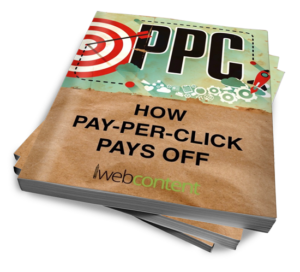Should I Geo-Target My Small Business Website?
When I got a pseudo-personal letter recently from a major insurance company asking, “Hey Debra, are you prepared for the next tornado?,” I was unimpressed. Anyone can get my name and everyone knows Texas is twister alley.
But when a popup on the Pottery Barn website announced, “There’s a $10 coupon waiting for you at your Knox Street store,” I said, “Where are my car keys?”
If you’re going to target customers based on where they live, work and play, get it right. Otherwise you come across like a form letter destined for the circular file. Getting creative and specific with your offers makes customers feel special. They’ll be more likely to open the link, look around your small business website and accept the offer. According to a study by Infosys, nearly 60% of shoppers who have experienced personalization believe it has a noticeable influence on their purchasing. Customers are much more likely to engage with offers when they appear to be directed exclusively to them.
Location, Location, Location
Actually, make that geolocation. That’s the focal point of geo-target marketing, which uses geographic information to automatically deliver highly-personalized content close to the point of purchase. Geo-targeting actively responds to geolocation through identification of a visitor’s IP (internet provider) or by wi-fi GPS data tracking.
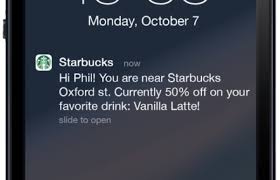
Google loves geo-targeting because the search engine wants to make sure your audience is served the most relevant content. Therefore, geo-targeting can be one of the best ways to optimize for SEO, increase site engagement and lead to conversions.
When a content writer prepares popups targeting specific locations, they need to come up with wording far beyond a few regionalisms like “Howdy, Texas” or “Wicked Buys, Beantown.” Put some thought into it. “We’re Not In Kansas, Toto–But We Are In Short Hills Mall.”
5 Put-To-Use Prime Examples
- Speak Their Language: TaittInger
In a show of corporate responsibility (and legal compliance), this international spirits maker offers the relevant minimum drinking age disclaimer to a long menu of countries. When country is selected, the site redirects to each appropriate translation.
Over 30 language choices:
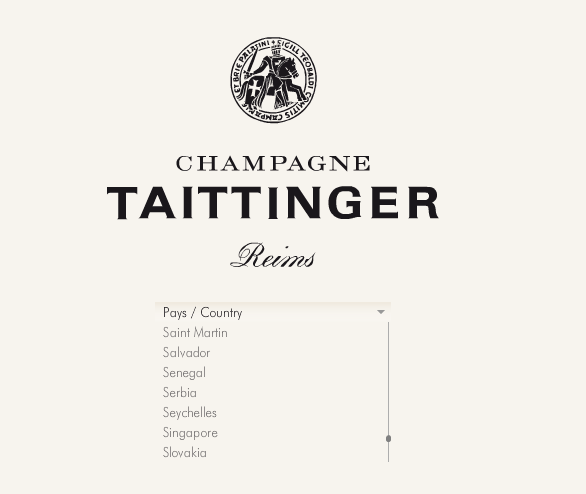
- Make Locally-Relevant Offers: Groupon
Matching products and services to users’ locations is pretty much what Groupon does. It’s geolocation content marketing based. Home or away, it works for the city you live in or the city you are visiting. You can be sure Groupon knows exactly where you are on any given day and stands ready to help the moment you land on their site.
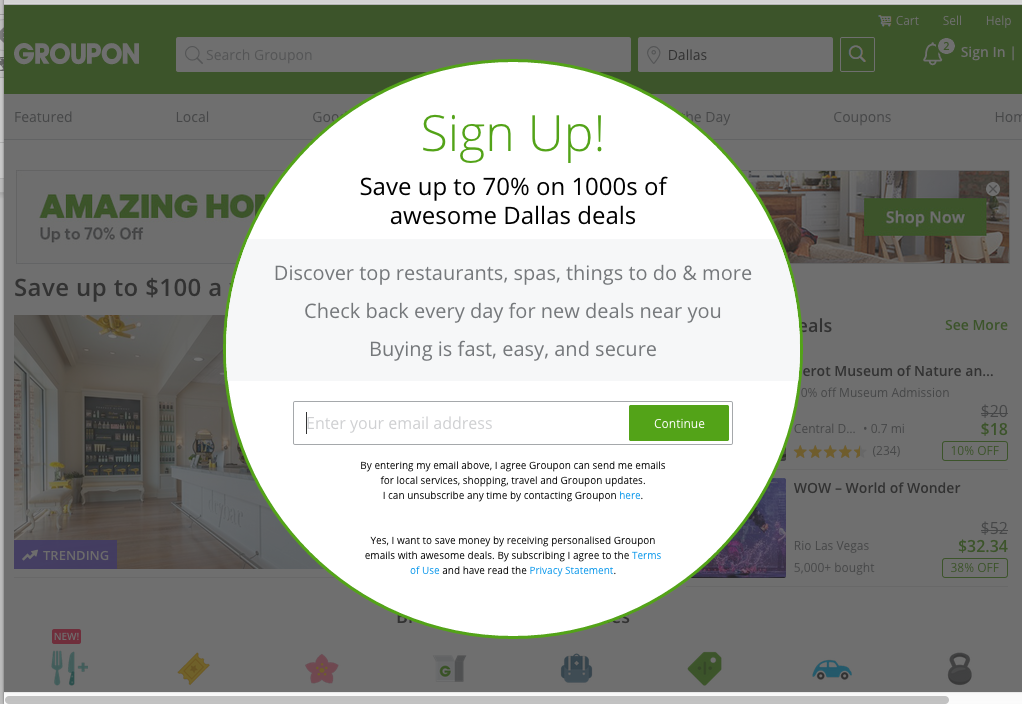
- Pull customers from nearby stores: Whole Foods Market
Mobile ads that appear for one store while you’re shopping at another can have the effect of big brother watching you restock the fridge. But if these moment-of-choice messages can woo shoppers away from the competition, more flour to them. Whole Foods tracked mobile users in neighboring stores and targeted incentivizing ads for their own nearby store. As shoppers abandoned their carts and headed for healthy, the technique almost tripled their post-click conversion rate.
- Match Currency: Le Labo Perfumes
Experimenting with offering different regional currency options may reveal customer preferences and purchasing patterns. This exclusive hand-mixed perfume maker has stores around the world. The website offers a choice of U.S. dollars or euros when viewing prices. Soon currency conversions will be available for China where they have several stores.
Dollars:

Euros:

- Shop local : AutoZone “My Store”
Assuming your customer loves your store located closest to their house is a bit presumptuous. Maybe they like to shop in a different direction. Maybe there’s better parking a few miles away. On the other hand, it does suggest a loyalty associated with giving your dollars to the surrounding shops where everyone knows your name and having access to the AutoZone mothership website in case you have a complaint.
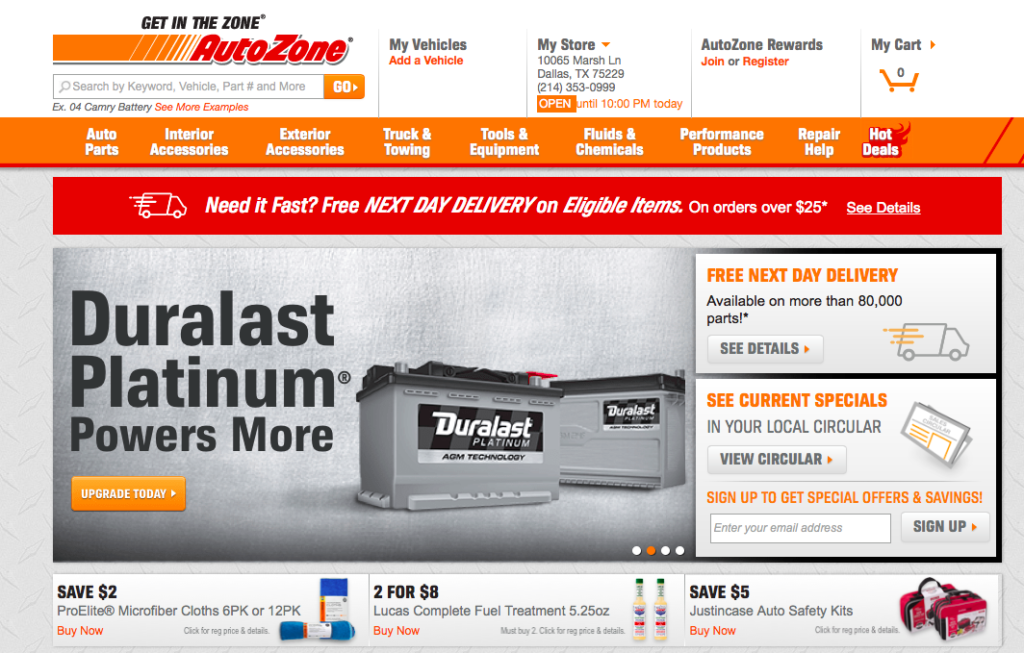
How It Works, Who It Helps
I’m a big fan of searching “dry cleaners near me,” “home cooking near me,” etc., etc. Using this same type of online locator service, chains like Home Depot and Walmart appear ranked in order of miles away from your current location.
While geo-targeting is a great communicator, it can also be used to gather data. For example, Starbuck’s recent magnanimous pledge to eliminate one billion plastic straws a year relied on knowing who were the biggest offenders to implement some straw and order. Using proximal traffic and distribution data (the number of people who come in and order cold drinks with straws), analysts can estimate how much pollution their efforts will prevent in that particular region.
Geo-targeting is primarily a redirect on your server whereby a specified range of IP addresses gets automatically redirected to pages with highly targeted content. Segmentation can be by country, state, region, neighborhood, zip code or anyone drinking a cold drink in Seattle on a Tuesday afternoon near a river.
Pay Per Click Advertising (PPC) can be used to test the effectiveness of geo-targeting. While it can be costly, PPC allows you to selectively redirect to more specific pages or URLs where you can test offers and track conversions.
Using subdomains and folders for international content aimed at different countries will make it easier for the search engines to find. This is just a limited group of content with distinct URLs and not the same as having a language menu offering the entire site in translation.
Finally, you can use dynamic text replacement which mirrors what a person types in a search bar and instantly repeats the query in an answer on your popup. For example: the searched phrase “California spas” appears in your website popup as “Relax. Looking for the best California spa?”
If you’re looking to meet people on their own turf, geo-targeting can get you there. Unless you work with a location-based digital agency, it will be challenging initiating a geo-marketing strategy, especially if you don’t have enough data about your visitors or the technical know-how to set it up. From deciding what to offer to deciphering the results, our team is standing by to walk you through it.
